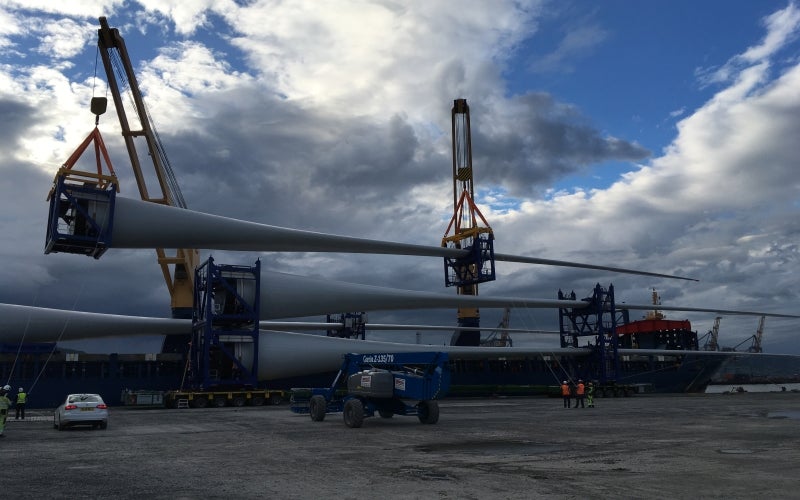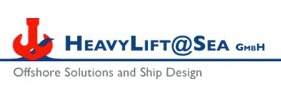
When it’s time to get creative, the professionals at HeavyLift@Sea are more than committed to sharpening their thoughts and delivering solutions that are often outside the box.
HeavyLift@Sea has the unique combination of having naval engineers and marine designers onboard that can offer both, and within the desired timescales set down by the client.
Albeit in business terms, it is still a relatively young company. Founded in 2012, HeavyLift@Sea has virtually tripled its workforce from five to 13 in order to keep up with demand for clients in the oil and gas, offshore wind farm and shipbuilding sectors.
Managing Director Mr Hendrik Gröne highlighted the company’s rapid advances on projects and flexibilities in shifting relatively easily across industries as a major draw for clients.
He said: "We are still a growing company, while there has been a noted downturn in both the shipbuilding sector and the oil and gas industry for various reasons that have tested the endurance and stamina of more established companies.
"However, our ease in diversifying across projects is one of the core successes of HeavyLift@Sea and enabled us to take part in a host of large scale and prestigious projects.
"For now, we are focusing on the growth markets in the offshore wind farm and alternative energy markets."
Innovative designs
HeavyLift@Sea’s team of experienced personnel have designed and managed the world’s leading heavy lift ships and were amongst the first to manage the development and production of the first heavy lift jack-up vessel, designed and built in Germany during their time at Sietas Shipyard, Germany.
Among HeavyLift@Sea’s many milestones has been the designing of a flexible offshore jack-up service and maintenance vessel for wind energy plants offshore.
The self-propelled unit with DP-2 capability has an offshore heavy-lift crane with a capacity of 400t arranged at the portside aft.
To ensure safe crane operation during installation, the vessel is equipped with a high-performance, double acting jacking system with four tubular legs.
The jacking unit of the aft leg on the port side is located inside the crane foundation.
The vessel, which comes with a high performing ballast system, is able to maintain wind energy plants consisting of nacelle, hub and blades.
In a jacked up condition, the vessel offers a stable working platform for safe operation of the crane and the deck load.
The crane can be operated with a full load in floating conditions so that jacking in the harbour is not necessary.
Mr Gröne said HeavyLift@Sea had also designed an advanced purpose-built service offshore vessel (SOV), one of the latest innovative approaches in customised vessels, for the service of offshore wind farms.
He explained that nowadays over 80 offshore wind farms are equipped with more than 3,200 installed and grid-connected turbines.
Among others, Siemens, MHI Vestas, Adwen, GE Renewable Energy and Senvion are counting to be the top offshore wind turbine suppliers in terms of installations.
Gröne continues: "These major players plan to further diversify and secure customer loyalty and increase market shares and earnings by adding up to 15-year service agreements to their wind turbine orders.
"When it comes to preventive and corrective maintenance tasks and finally performance and availability of electricity, the SOV is a key asset for wind park stakeholders."
Purpose-built vessels
Hence, HeavyLift@Sea has designed a SOV that is available in different variants and configurations.
The standard configuration serves as a base for 60 technicians and crew members but can also be reduced to 40 if required.
The SOV prevents different measures for a comfortable and restful stay on board, has 40-60 single cabins, low noise level during operation of the vessel through acoustically insulated bulkheads and decks, and has a roll reduction tank system.
The 71m SOV is designed for optimal sea-going capabilities; its deadweight carrying capacity is of 1,800t, and a trial speed of 13 knots is achieved by two main engines of 1,400kW, three auxiliary engines of 1,200kW and two controllable pitch propellers.
The company also offers an advanced purpose-built offshore accommodation vessel (OAV) for operations at offshore wind farms.
In terms of effective supply logistics, the OAV serves as a base for up to 60 technicians and crew members.
Mr Gröne said: "The difference between us and our competitors is that our professionals all have backgrounds from the shipyard environment. So we know all the delays that customers can experience, their problems and their concerns, during the ship design and build process.
"So we can empathise with them and seek to find solutions. Our challenge is seeking to improve the vessel designs to meet the maximum satisfaction of the client."
Clients can be suppliers
Gröne notes: "Our competitors are either designers or engineers, but we have experience of both ends of the spectrum and that is our uniqueness.
"Our clients’ wishes are of prime importance and the source of our inspiration. We have built an excellent network where, sometimes, the client can be the supplier.
"We deliver quality and have a short reaction time, so they know they will get the best results in the shortest possible time."
HeavyLift@Sea is also engaged with two other companies on a government contract in relation to a research project and is anticipating being engaged on another later in the year in association with the Hamburg University of technology TUHH.
He commented: "We aim to be at the cutting edge of design in the offshore wind energy sector and we are always refining our systems and processes.
"For now, we are content with our strategy and we expect to grow the business further in the wind energy niche over the next two to five year period."
Please contact HeavyLift@Sea via the enquiries form for more information.

